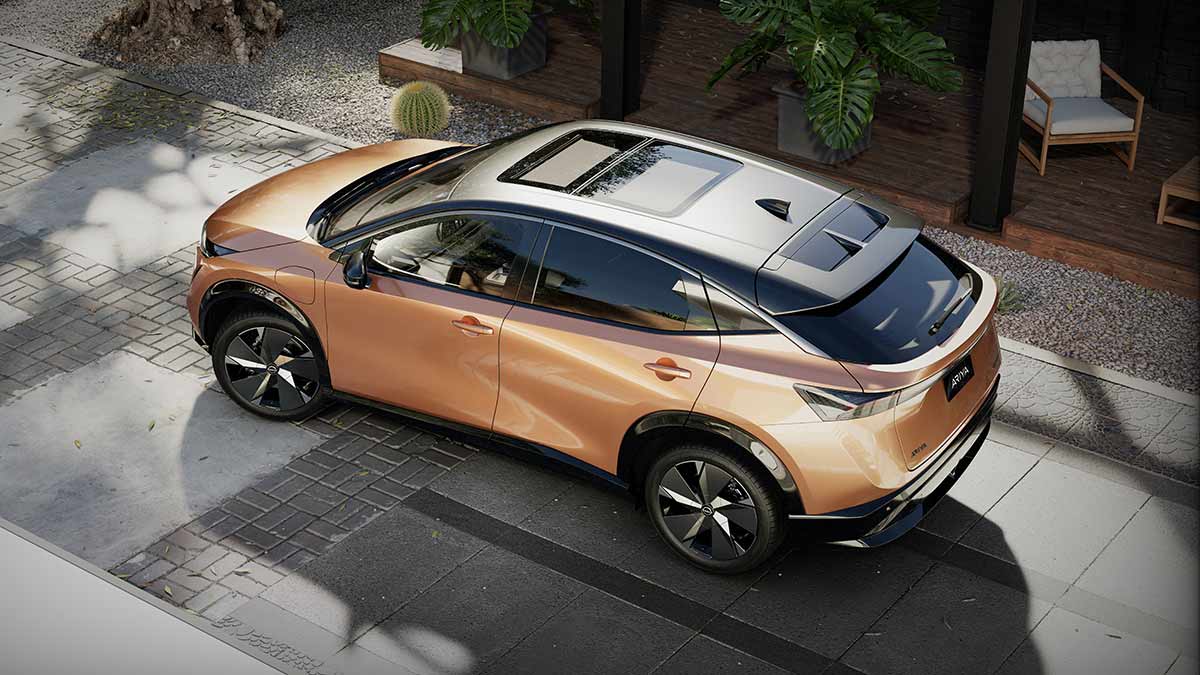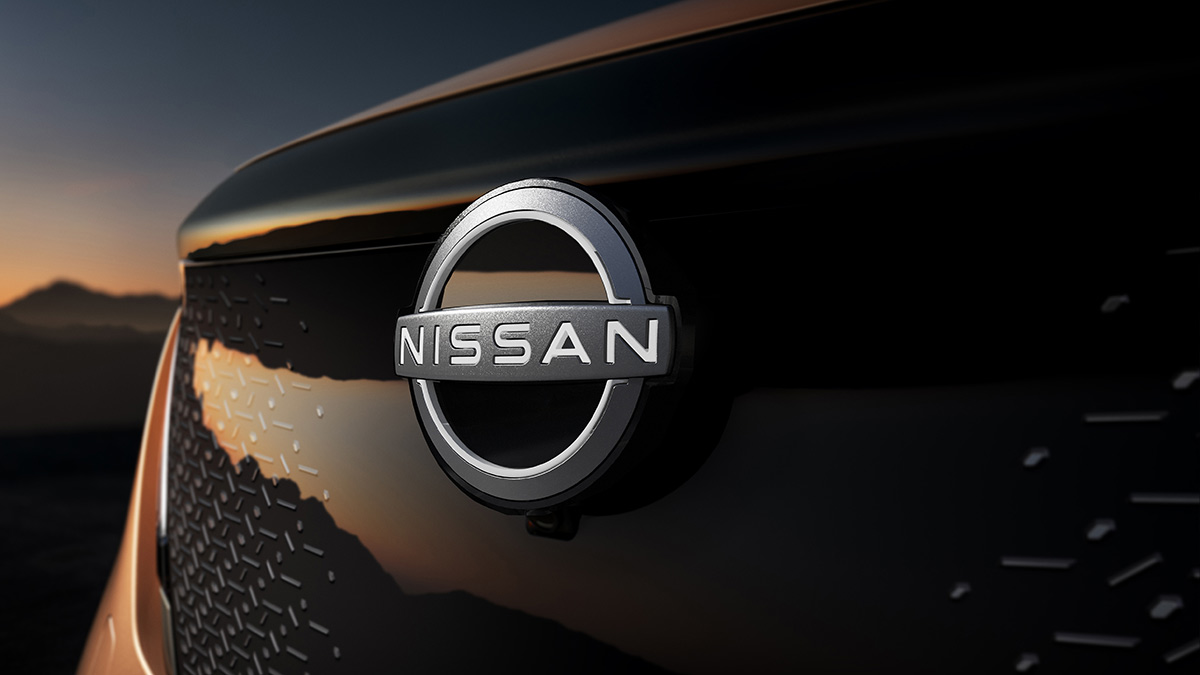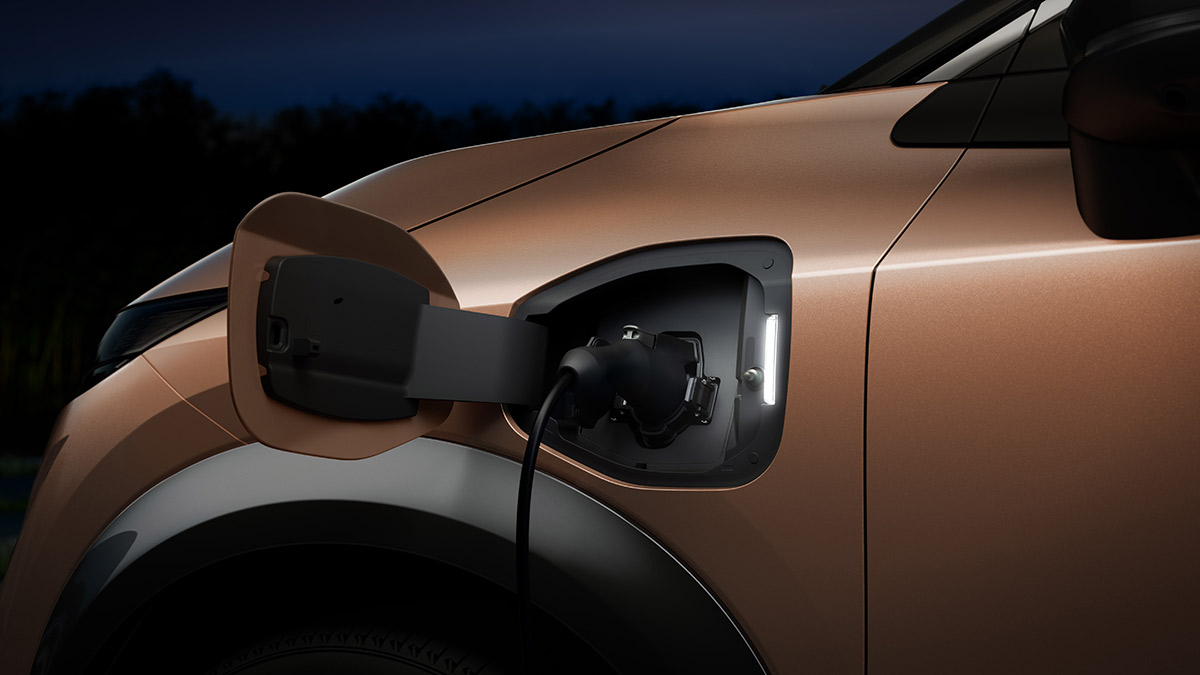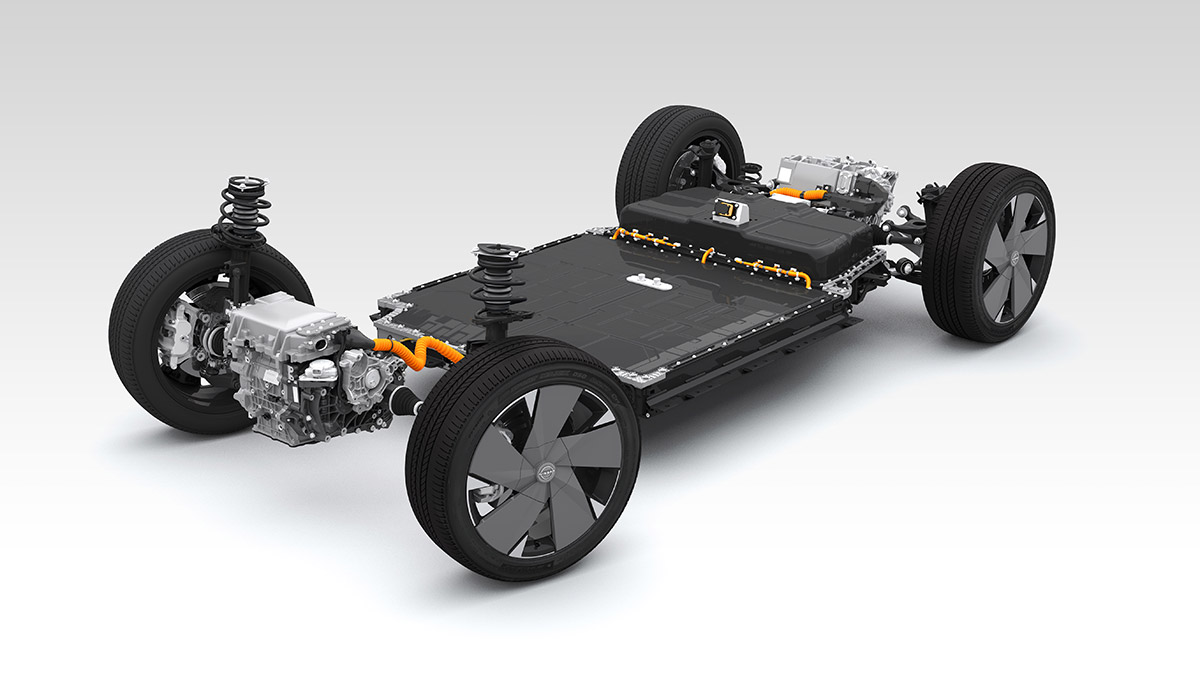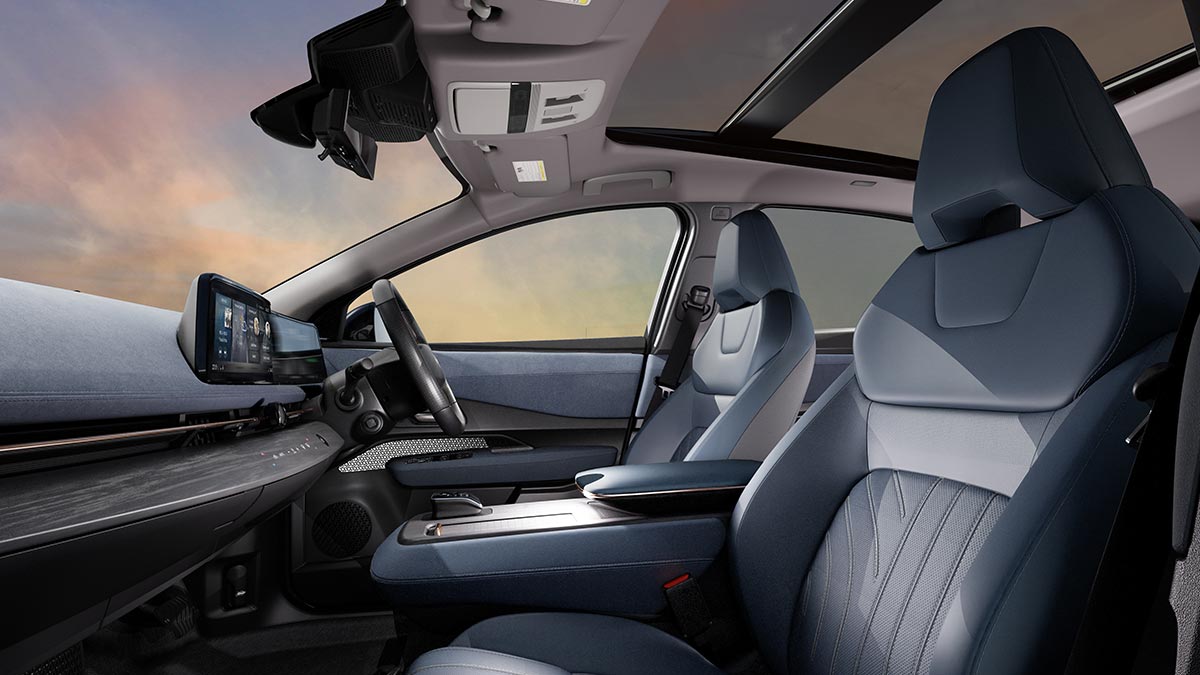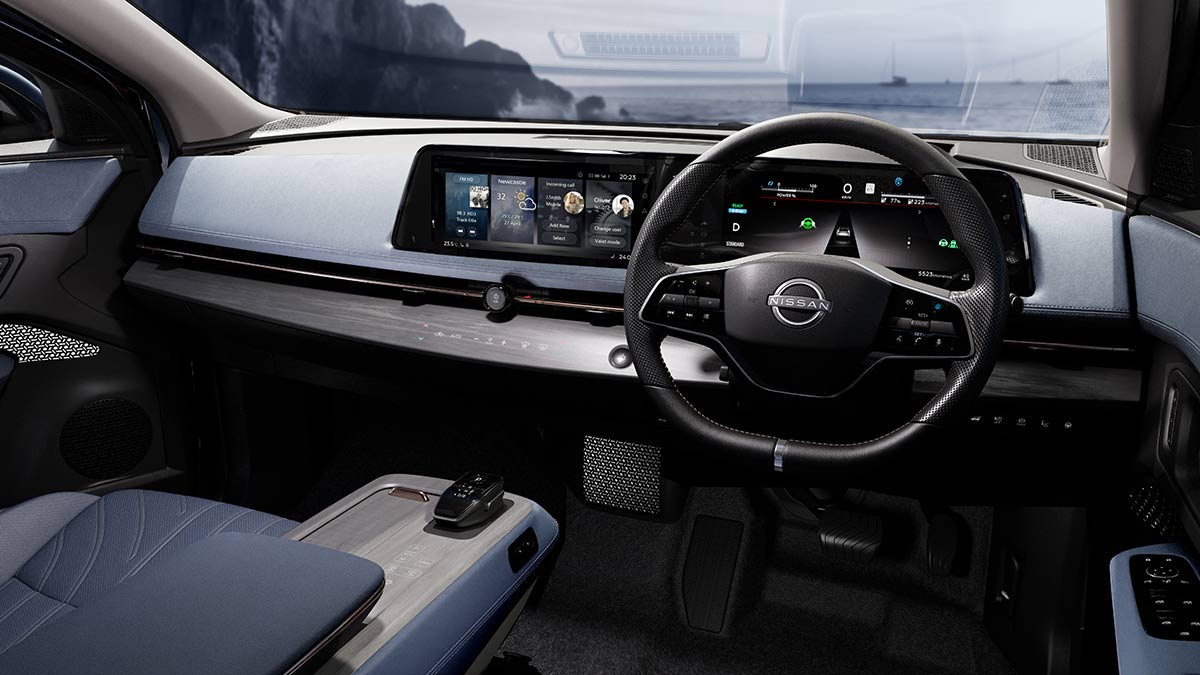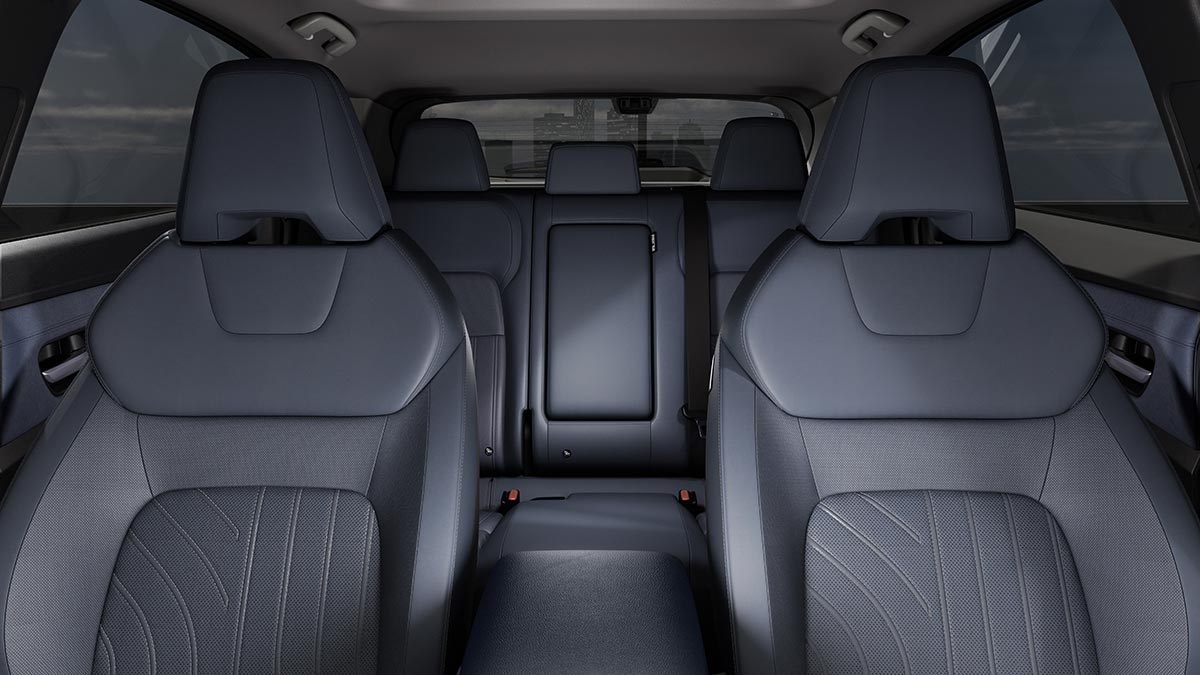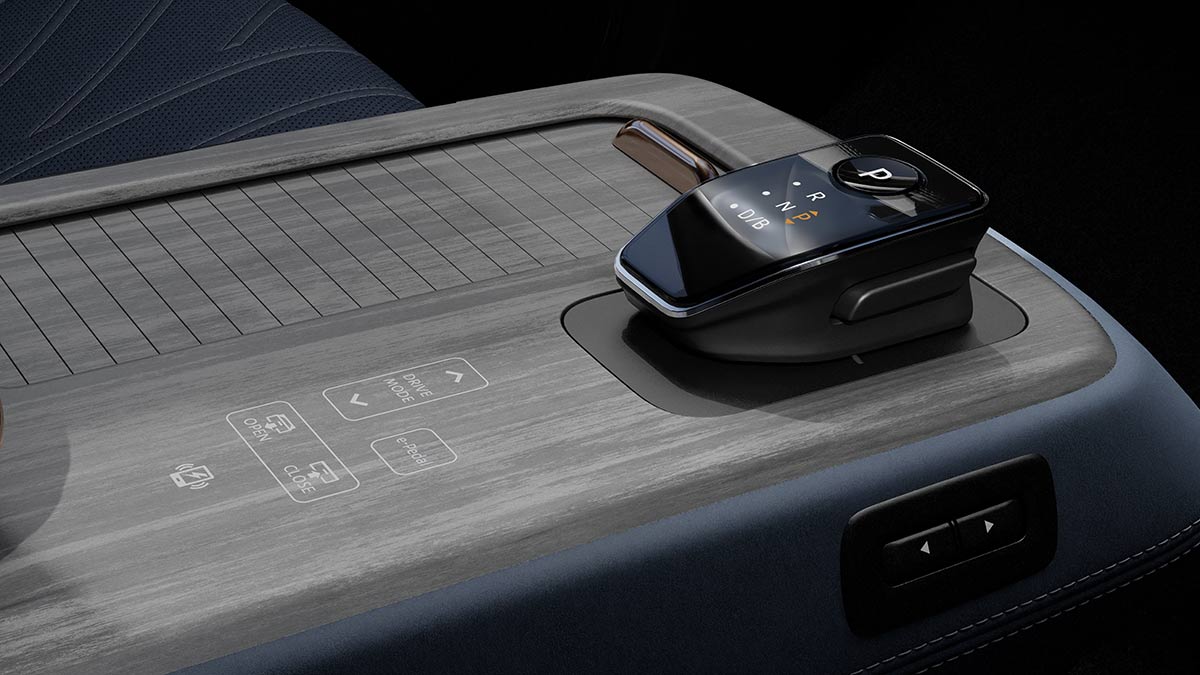Is this the easiest EV to drive? The striking new Nissan Ariya medium SUV provides a fresh alternative to the Tesla Model Y.
2025 Nissan Ariya: price, specs and release date in Australia
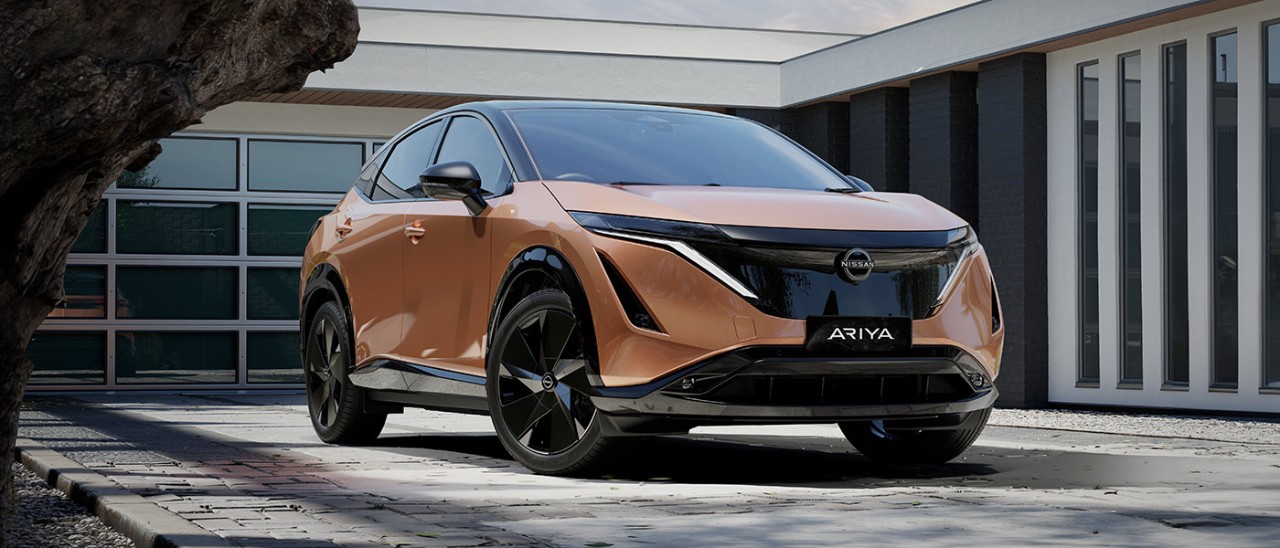
The Nissan Ariya EV is coming soon in the popular medium SUV class, taking the fight up to Tesla, BYD and other big brands with a broad range and competitive pricing.
The order books have finally opened in Australia for the long-awaited 2025 Nissan Ariya battery-electric SUV ahead of first deliveries later this year.
Lining up against the Tesla Model Y, BYD Sealion 7, Kia EV5, Toyota bZ4X, Volkswagen ID.4 and a host of other EVs in the top-selling medium SUV class, the Japanese-built Nissan Ariya will be available in several model grades that cover single-motor and dual-motor powertrain options and two battery capacities.
Returning EV power back to Nissan showrooms after supplies of the now-discontinued Nissan Leaf hatchback ran dry earlier this year, the Ariya is well into its model lifecycle after being first shown in production guise in 2020 and hitting the streets overseas in 2022 after overcoming delays caused by the global semiconductor shortage during the COVID-19 pandemic.
Australia took a back seat as bigger markets were prioritised and homologation issues further complicated the local program, but Nissan has now swung its attention around with the EV to bolster its well-respected petrol-electric hybrid car line-up, led by the Nissan X-Trail e-Power.
Crucially, Ariya will also help offset emissions from the carmaker’s all-important pure combustion engine models – most notably, the Nissan Navara and Patrol – under the New Vehicle Efficiency Standard (NVES) that came into force on July 1, 2025.
There’s a lot riding on the Nissan Ariya, so let’s dive into the details to see how the EV stacks up ahead of its launch and review.
More: Search and compare new and used electric cars on sale today in Australia
In this article
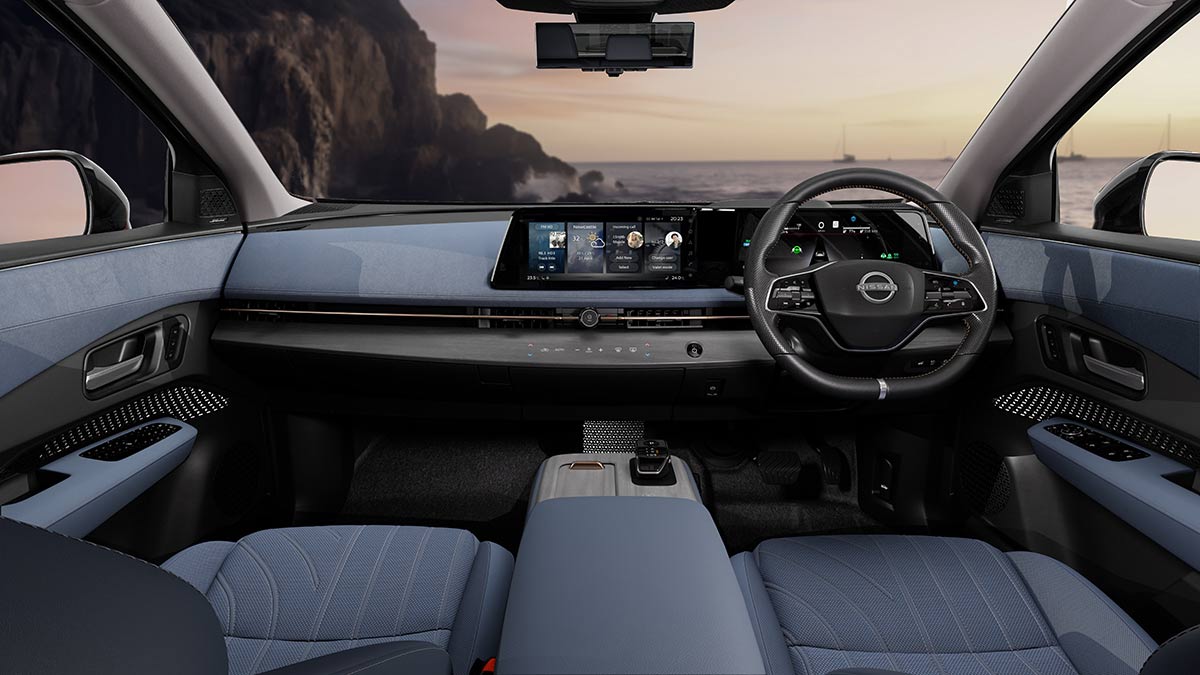
The flagship Nissan Ariya Evolve features blue leather seat upholstery and blue suede trim on the dash, doors and centre console.
When does the Nissan Ariya go on sale in Australia?
The Nissan Ariya is now available to ‘build’ and order ahead of the EV’s official arrival date at the beginning of September 2025.
The Australian launch range spans four model grades – Engage, Advance, Advance+ and Evolve – which are differentiated by equipment levels and/or powertrain, battery capacity and drive layout. All models are five-seaters.
There is no word yet on a local launch of the Nissan Ariya Nismo that’s sold overseas, where the sporty dual-motor flagship offers more power, improved dynamic performance and unique design elements.
More: The cheapest electric cars in Australia for 2025
How much does the Nissan Ariya cost?
The 2025 Nissan Ariya has four tiers to its model range at launch, opening with the Ariya Engage priced from $55,840 plus on-road costs. That converts to $60,731 for private buyers in Victoria and puts the Ariya in a competitive position against key rivals such as the Tesla Model Y (from $64,373 driveaway) and the BYD Sealion 7 (from $58,173.70 driveaway).
A higher-spec Ariya Advance that uses the same entry-level powertrain and battery is positioned further upstream, starting at $59,840 plus ORCs ($64,899 driveaway).
From there, the mid-tier Ariya Advance+ adds equipment and a more powerful electric motor and battery combination for $63,840 plus ORCs ($69,067 driveaway), while at the top end the Ariya Evolve e-4ORCE has a dual-motor/four-wheel drive powertrain and premium features to go with its $71,840 plus ORCs price tag ($77,403 driveaway).
Nissan’s standard new vehicle warranty remains at five years (with unlimited kilometres) for the Ariya, extending to 10 years/300,000km if you service the car through the brand’s franchised dealer network. The company also provides a separate eight-year/160,000km battery warranty, based on battery capacity loss over that period of no more than three bars (down to nine from a maximum 12) as shown on a gauge inside the EV.
A five-year capped price servicing scheme has been developed, but prices are still to be announced.
More: Car servicing costs and differences: EV vs petrol vs diesel
| 2025 Nissan Ariya electric medium SUV | |
|---|---|
|
Nissan Ariya Engage |
$55,840 |
|
Nissan Ariya Advance |
$59,840 |
|
Nissan Ariya Advance+ |
$63,840 |
|
Nissan Ariya Evolve e-4ORCE |
$71,840 |
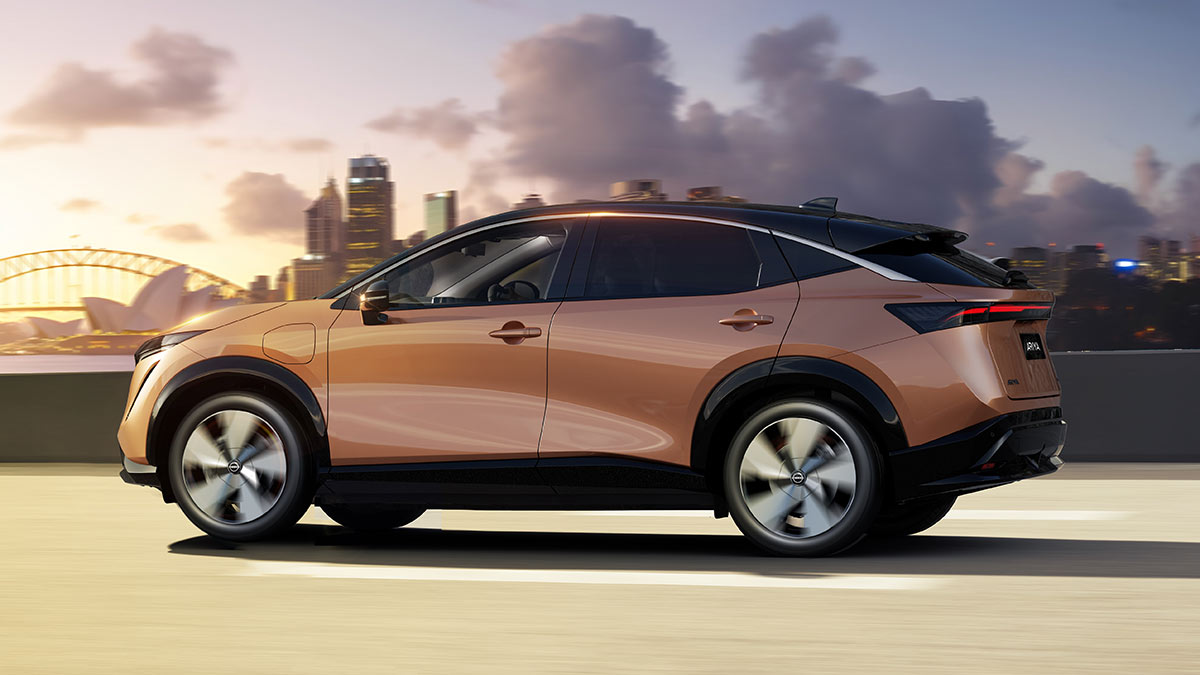
High-series versions of the Nissan Ariya are available with Akatsuki Copper paintwork and a black roof.
What is the range and performance of the Nissan Ariya?
At the entry level, the 2025 Nissan Ariya uses a single electric motor that produces 160kW of power and 300Nm of torque. It drives the front wheels through a single-speed transmission and, according to the manufacturer, can accelerate from 0-100km/h in 8.0 seconds.
A 63kWh lithium-ion battery provides the base-spec Ariya Engage and the next-step Ariya Advance with a claimed 385km driving range, based on the WLTP test. That’s despite the Advance being slightly heavier at 1921kg kerb weight (+13kg). Electricity consumption for both is rated at 18.4kWh/100km.
The Ariya Advance+ has a more powerful 178kW e-motor (torque remains 300Nm), although at more than two tonnes (2075kg) – due to its bigger 87kWh battery and higher specification – the SUV is a bit slower to 100km/h (8.1sec). The trade-off is a significantly longer range at 504km (WLTP). Electricity consumption is 19.1kWh/100km.
The top-spec (and heavy 2222kg) Ariya Evolve e-4ORCE is the performance leader with two 160kW/300Nm e-motors – one at each axle – that, combined, produce 290kW and 600Nm. This provides all-wheel drive and enables the SUV to reach 100km/h from standstill in 5.6 seconds.
The claimed driving range for the dual-motor flagship, which also uses the 87kWh power pack, is 487km and efficiency is 20.8kWh/100km.
All models use a CCS Type 2 charging point connector, with the single-motor versions fitted with a 7.4kW onboard charger (for single-phase power supply). The dual-motor Ariya has a 22kW onboard charger (managing three-phase supply), which is also optional on the 87kWh single-motor Advance+. Nissan says it will take nine hours for the 63kWh battery to charge from 10-100 per cent using a 7kW home charging unit, while the 87kWh models can be replenished in 12.5 hours. Using three-phase with the latter cuts this down to 4.5 hours.
The Ariya can manage DC fast-charging at rates up to 130kW. Nissan says a 10-80 per cent charge at 50kW will take 65 minutes (63kWh battery) or 90 minutes (87kWh battery). This drops to 35/40min respectively with a 130kW charge.
Braked towing capacity is listed at 750kg for front-wheel drive models, rising to 1500kg for the dual-motor/AWD e-4ORCE.
Nissan Ariya exterior design
The 2025 Nissan Ariya comes under the design philosophy that the carmaker describes as “timeless Japanese futurism”. You can make of that what you will, but the EV cuts quite a striking pose with short front and rear overhangs, curved roofline and a new take on the brand’s V-motion grille.
The Ariya measures 4595mm long, 1850mm wide (excluding mirrors) and 1660mm high, with a 2775mm wheelbase. Ground clearance is 182mm for the Ariya Engage and Advance and 180mm for Advance+ and Evolve. The single-motor variants run on 19-inch alloy wheels, while the dual-motor flagship has 20-inch rims.
All models have LEDs for the headlights, tail-lights, front foglights and daytime running lights with ‘follow me home’ functionality. Automatic high beam assist is standard, though more sophisticated adaptive driving beams are employed on Evolve.
The base Ariya Engage is the only one to miss out on tinted rear windows, while the longer-range Advance+ and Evolve get a panoramic sunroof.
The exterior colours include no-cost Aurora Green and optional (+$1037) Pearl Black and Gun Metallic at each grade, with White Pearl and Ceramic Grey also offered on Engage and Advance (+$1037). Buyers can specify a black roof with White Pearl and, on the higher-tier Advance+ and Evolve models, Blue Pearl, Ceramic Grey and the Akatsuki Copper shown with the car on this page (all +$1562).
What is the Nissan Ariya like inside?
More Japanese design elements are found inside the 2025 Nissan Ariya, such as the woodgrain effect on the dashboard and centre console trim and soft ‘Andon’ lighting inspired by traditional lanterns. The dash includes a 12.3-inch centre touchscreen and a line of touch-capacitive controls underneath for the dual-zone climate-control air-conditioning.
Other headline items fitted standard on Ariya include keyless entry/start, a 12.3-inch digital driver’s display next to the centre screen, leather trim on the steering wheel, one-touch power windows (with remote up/down feature), an auto-dimming rearview mirror and power-folding and heated door mirrors.
A step up from Ariya Engage to Advance brings synthetic leather seat accents to the regular black cloth trim as well as electric seat adjustment (including lumbar and front seat heating), while the Advance+ features black synthetic leather trim with faux suede inserts, extra seat adjustment (including front position memory), front seat ventilation and rear seat heating.
At the top end, the Evolve has genuine blue Nappa leather seat upholstery, blue suede trim for the dashboard, door cards and centre armrest, unique LED interior lighting, a power-sliding front console, power steering wheel adjustment, extended memory for the steering wheel and door mirror positions, a tilt-to-reverse function on those wing mirrors, too, and an extra driving mode (Snow) above the range-wide Standard, Eco and Sport modes.
Except at the entry level, access to the luggage compartment is aided by a motion-sensing power tailgate. All Ariya models have a configurable ‘Divide-N-Hide’ cargo system, and as often found on EVs, they all go without a spare wheel, relying instead on a tyre repair kit.
Cargo capacity on single-motor variants is rated at 466 litres (to the roof) with the rear seats upright, extending to 1350L when the 60/40-split rear seatbacks are lowered. The dual-motor Evolve has less volume at 408/1280L respectively.
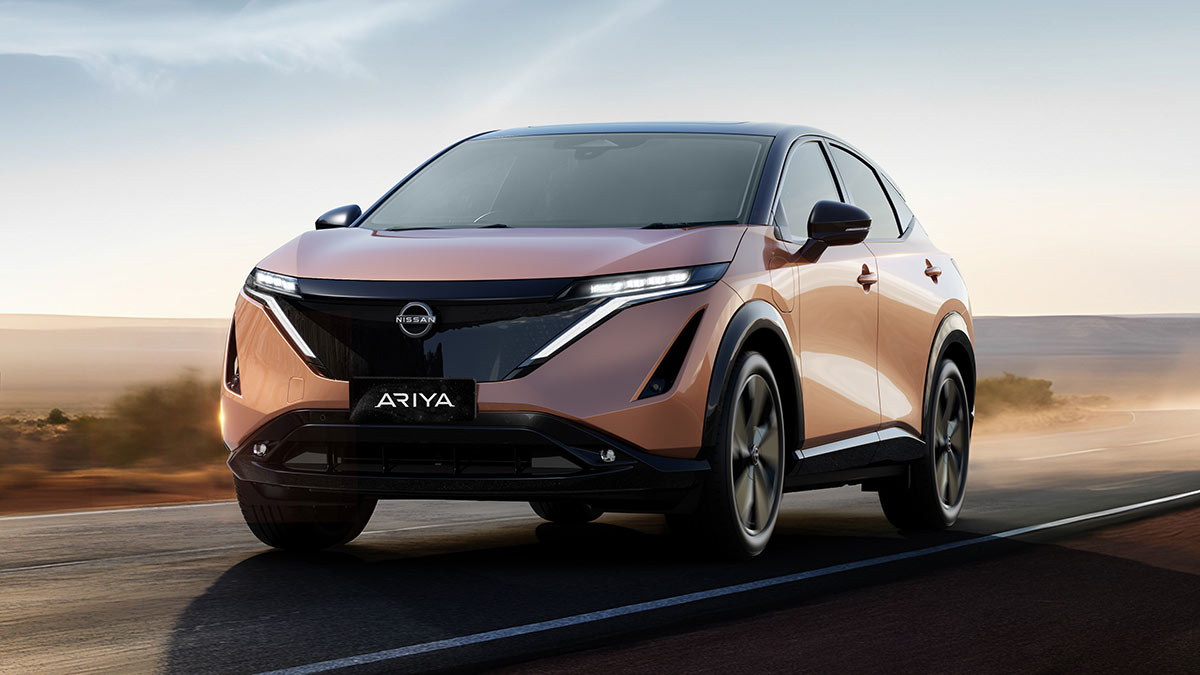
The Nissan Ariya is equipped with an array of active safety systems designed to assist the driver.
What safety and technology features on the Nissan Ariya?
The 2025 Nissan Ariya has a thorough suite of advanced driver assistance systems (ADAS) fitted standard across the range, with many of these sounding warnings and intervening automatically where deemed appropriate in situations such as lane keeping and when covering blind spots.
There’s also autonomous emergency braking (AEB) with junction assist and pedestrian/cyclist detection, rear cross traffic alert, driver attention monitoring, adaptive cruise control, traffic sign recognition, tyre pressure monitoring and an Acoustic Vehicle Alerting System (AVAS).
All models have a rearview camera and front/rear parking sensors, however the entry-level Ariya Engage misses out on a 360-degree surround-view monitor with moving object detection. The Advance+ and Evolve also feature a head-up display.
Dual front airbags and side chest-protecting and head-protecting (curtain) airbags are provided, along with a centre airbag designed to prevent head-clash between front seat occupants.
The Nissan Ariya received a maximum five-star ANCAP safety rating for the New Zealand market in 2024, based on testing conducted in Europe in 2022 when the EV was introduced. It’s unclear whether this will carry over to vehicles sold in Australia or if fresh testing, under stricter testing protocols, will be undertaken.
ANCAP testing for NZ was conducted on models that do not have a top tether anchorage point for child restraints in the centre rear seat position. This anchor point is a requirement under Australian Design Rules, which Nissan has now resolved for our market ahead of the EV’s launch.
In terms of infotainment and other driver support tech, the Ariya has the aforementioned dual digital screens, satellite navigation, a wireless phone charging pad, smartphone connectivity (wireless for Apple CarPlay but Android Auto requires a cable), voice control and Bluetooth phone and audio streaming.
A Bose 10-speaker premium audio system is fitted on all models bar the entry-level Ariya Engage (which makes do with an unbranded six-speaker stereo), while USB-A and USB-C ports are provided front and rear. Digital and FM radio is included – and the AM band, too, which is often missing on electric cars, owing to claims from some other manufacturers of electrical interference.
The information provided is general advice only. Before making any decisions please consider your own circumstances and the Product Disclosure Statement and Target Market Determinations. For copies, visit racv.com.au. As distributor, RACV Insurance Services Pty Ltd AFS Licence No. 230039 receives commission for each policy sold or renewed. Product(s) issued by Insurance Manufacturers of Australia Pty Ltd ABN 93 004 208 084 AFS Licence No. 227678.
